Hello Web3Naut !
Welcome to the 2nd Edition of the Solidity Series In this article, we'll dive deeper into the world of smart contract programming using Solidity. We'll build upon the basics covered in Solidity 101 and explore more advanced concepts. Let's get started!
You can check out 1st Edition here : #Solidity_101
Prerequisites: Familiarity with basic programming concepts.
1. Data Types:
Solidity supports various data types that allow you to define and manipulate data within smart contracts. Here are some commonly used data types:
uint: Unsigned integers (e.g., uint8, uint256)
int: Signed integers (e.g., int8, int256)
address: Ethereum addresses
bool: Boolean values (true or false)
string: String of characters
bytes: Fixed-sized byte arrays
2.Arrays and Mappings:
Arrays and mappings are used to store and organize data within smart contracts.
Arrays: Allow you to store multiple values of the same type. They can be fixed-size or dynamic.
Mappings: Key-value pairs that enable efficient data retrieval. They are similar to hash tables or dictionaries.
3.Function Modifiers:
Function modifiers are used to modify the behavior of functions within smart contracts. They can add additional checks or conditions before executing the function

In this example, the onlyOwner modifier ensures that the function changeName can only be called by the contract owner.
4.Events:
Events allow smart contracts to communicate with external systems and notify them about specific occurrences or changes. They can be useful for logging and tracking contract activities

In this example, the NewVote event is emitted whenever a user votes, providing information about the voter and the candidate ID.
5.Conditionals:
Conditions allow you to execute certain code blocks based on specified conditions. Solidity supports the commonly used if-else and switch statements.
If-else statement
The if-else statement is used to execute a block of code if a given condition is true, and an alternative block of code if the condition is false. Here's an example:
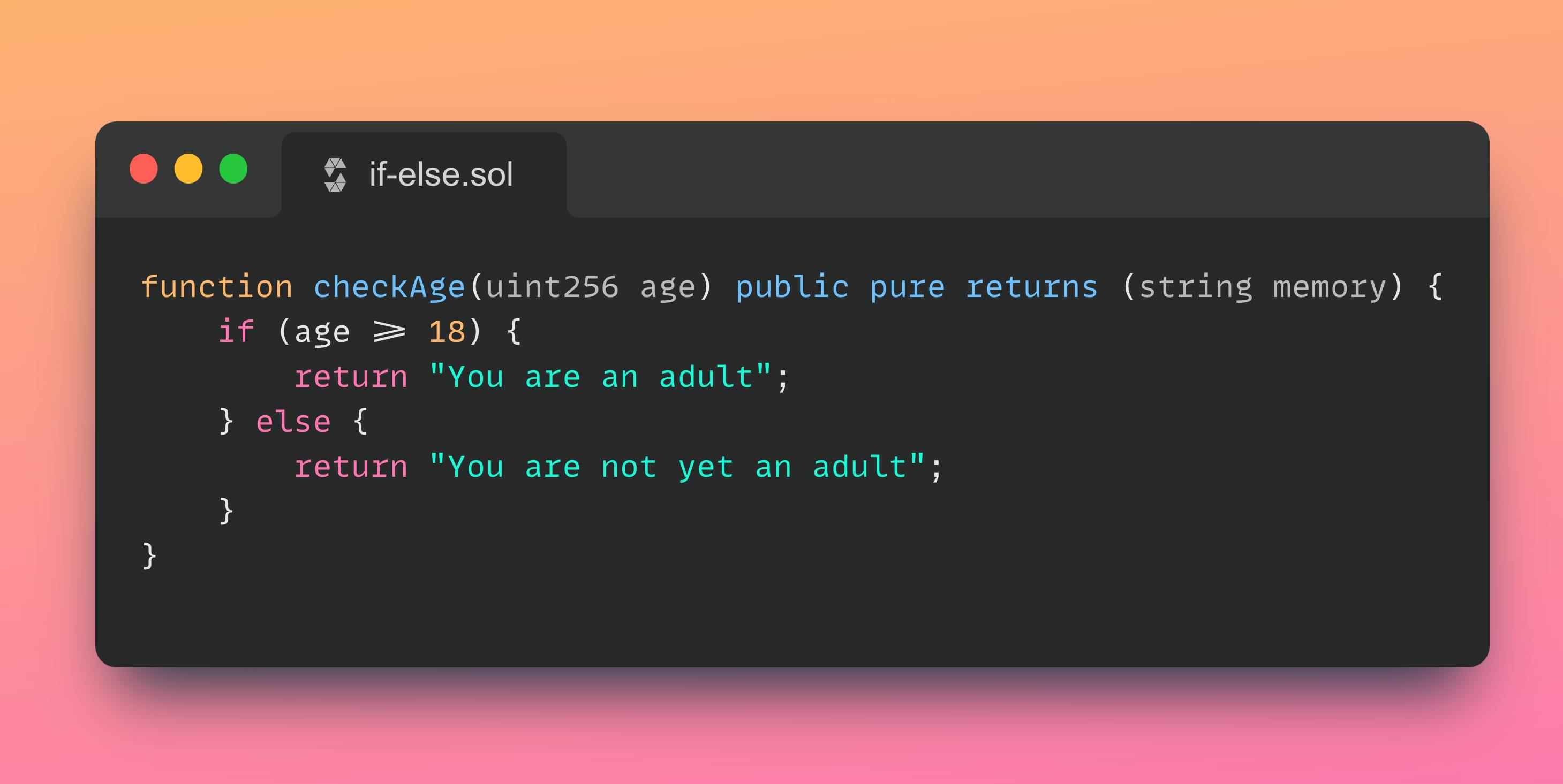
Switch statement
The switch statement allows you to select one of many code blocks to execute based on the value of a given expression. Here's an example:
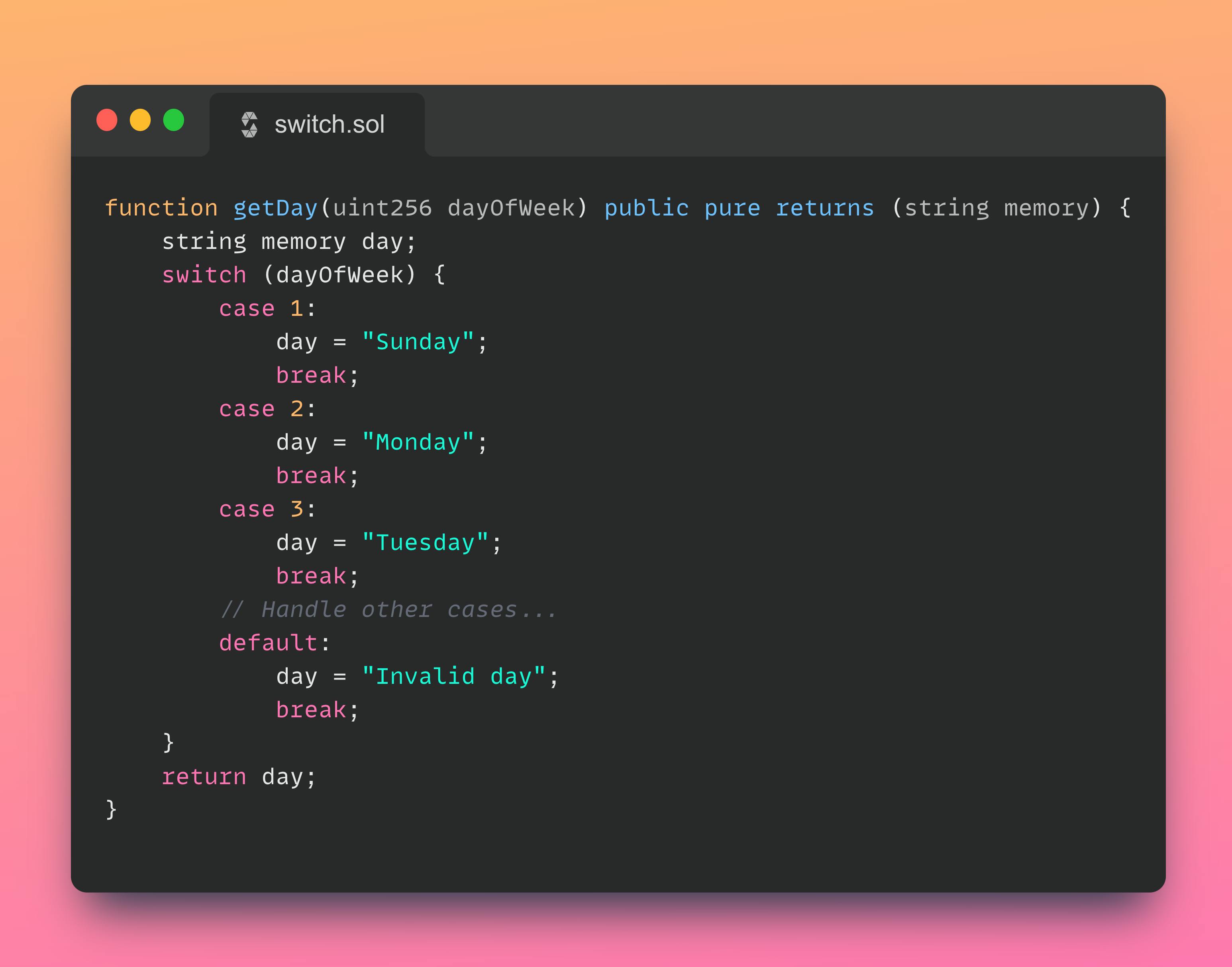
6.Loops:
Loops allow you to repeatedly execute a block of code based on a specified condition. Solidity supports the for, while, and do-while loops.
For Loop :
The for loop is used when you know the number of iterations in advance. Here's an example:
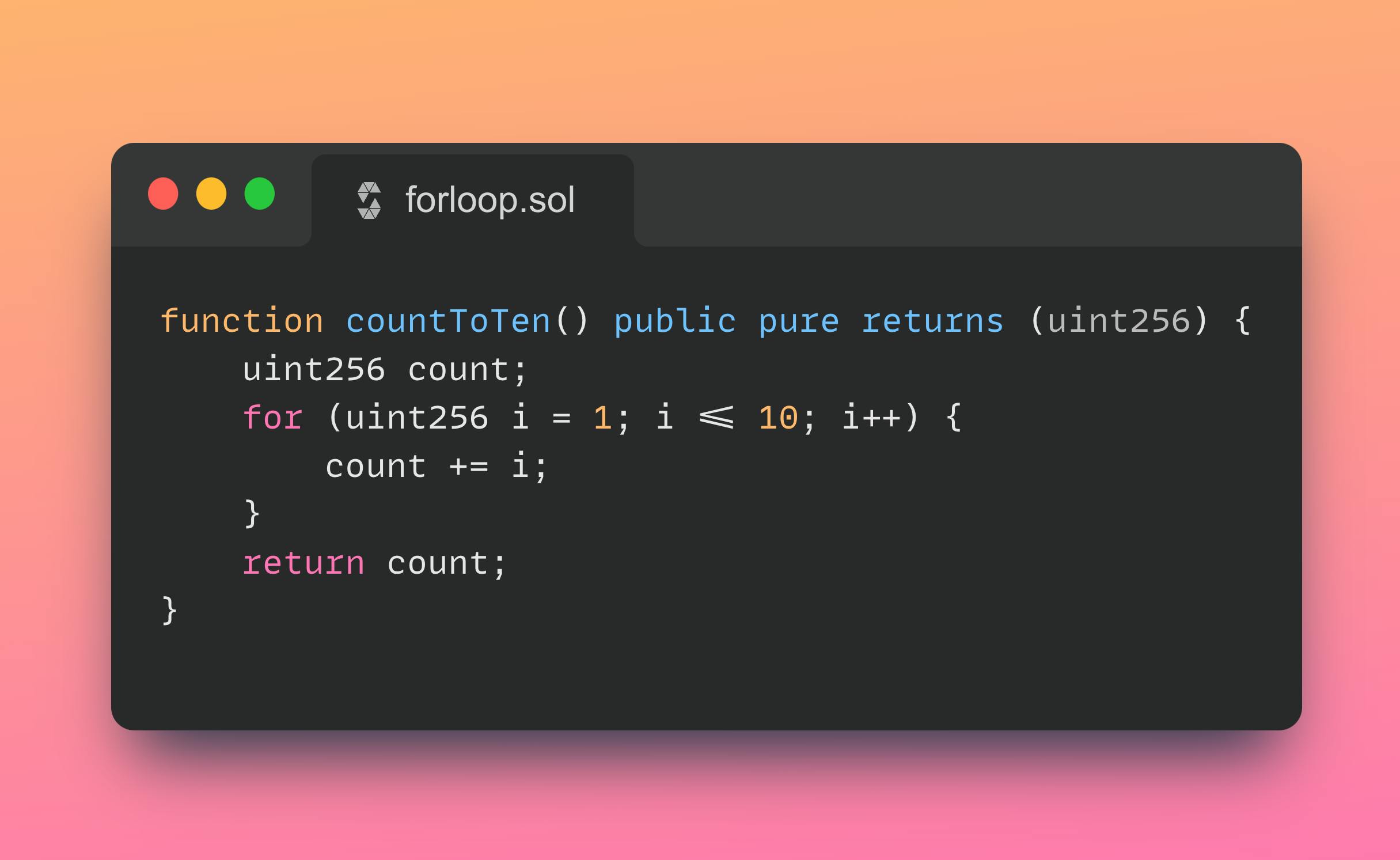
While Loop:
The while loop continues executing a block of code as long as a specified condition remains true. Here's an example :

Do-While Loop :
The do-while loop executes a block of code at least once, and then continues as long as a specified condition remains true. Here's an example :
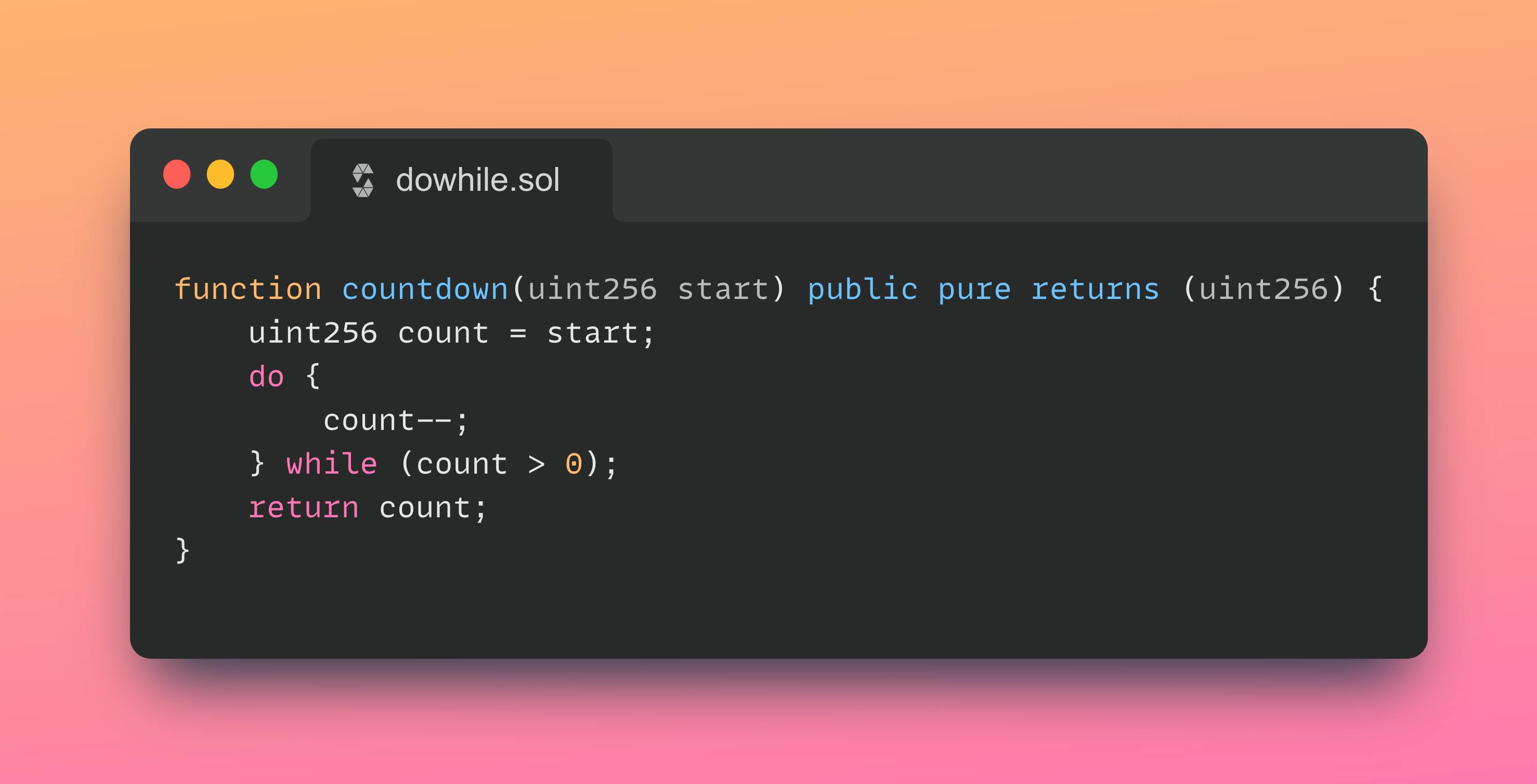
7.Inheritance:
Solidity supports inheritance, allowing you to create hierarchies of smart contracts and reuse code. This promotes code modularity and reduces redundancy. Here's a simple example
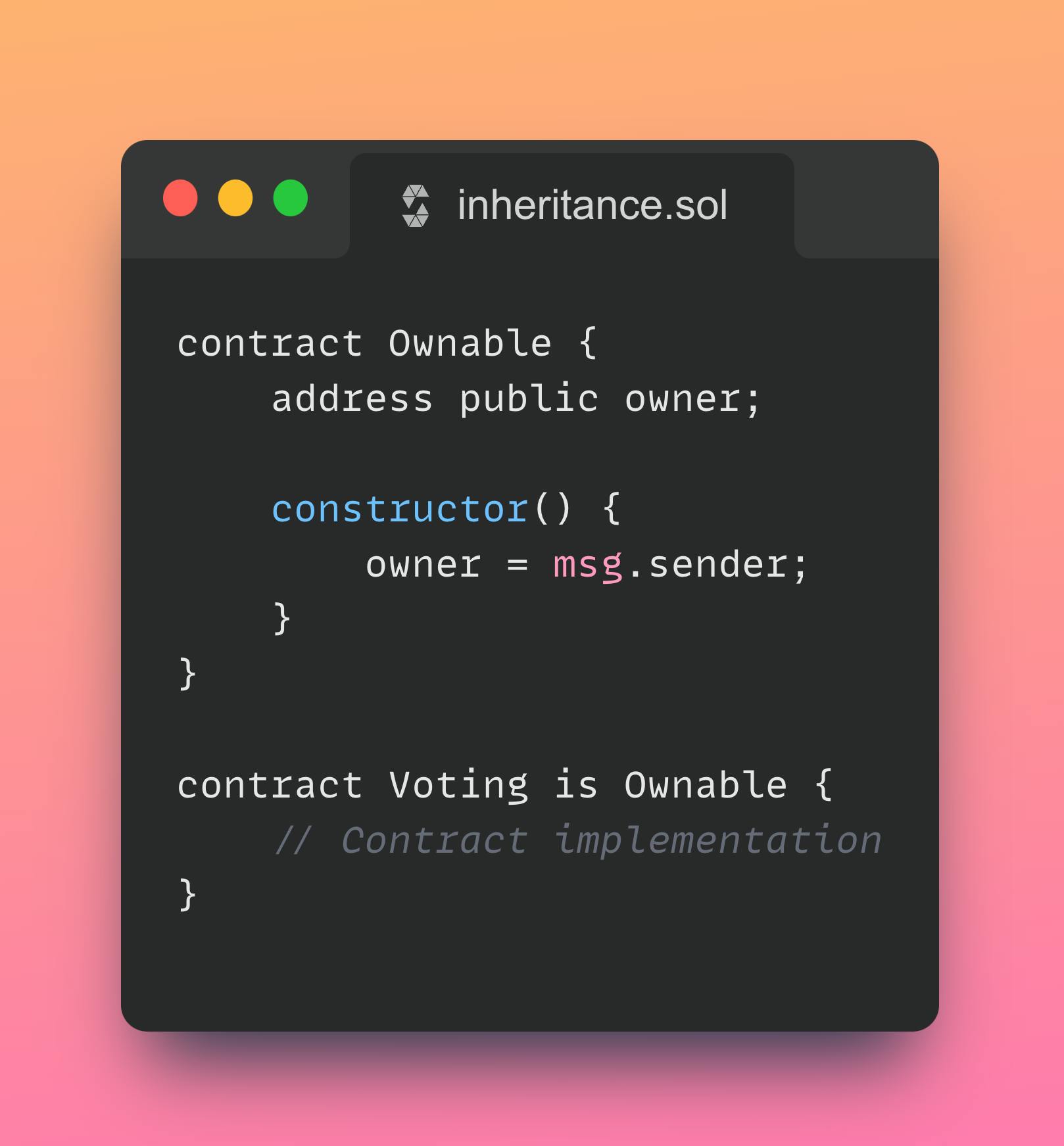
Continue practicing and experimenting with these concepts to enhance your Solidity skills. As you progress, you'll be able to build more sophisticated and powerful decentralized applications.
If you found this article helpful, make sure to follow me on Twitter for more insightful content like this. Stay updated with the latest developments in Solidity and blockchain technology. Let's connect and learn together!
There's plenty more fascinating stuff coming your way. Stay tuned!
Thank you !
#Solidity103 #SmartContracts #ConditionsAndLoops #Blockchain #SolidityProgramming #Web3 #SOSS

